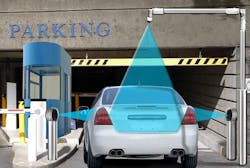DHS eyes standoff car bomb detector by identifying thumbprint-size explosives residue
Officials of the U.S. Department of Homeland Security (DHS) in Washington released a solicitation Monday for the Standoff Explosives Detection on Vehicles (SED-V) component of the Standoff Explosives Trace Detection program.
The Science & Technology Directorate of the DHS Homeland Security Advanced Research Project Agency wants to develop bomb detector technology to detect explosives residue on vehicles before the vehicles enter parking areas at federal facilities. These technologies also could be applied to other federal agencies.
DHS particularly is interested in standoff explosives-detection technologies because federal facilities continue to be attractive targets for terrorists. Today's vehicle visual inspections and occasional random trace or canine inspections, however, provide limited discrimination capabilities against harmless items, and are manpower intensive.
Related: IED hunters adapt to sophisticated threats
Instead, DHS wants to develop non-contact, near real-time detection technologies for federal facility protection that are designed to screen potential vehicle- and person-borne threats at fixed and portable checkpoints using emerging optical techniques like Raman and infrared reflectance spectroscopy.
The solicitation released this week involves the Standoff Explosives Detection on Vehicles (SED-V) component of the Standoff Explosives Trace Detection program, which seeks to advance standoff detection techniques for explosive residues on external vehicle surfaces.
The SED-V project has three phases: a 12-to-18-month advanced feasibility demonstration and preliminary design review (PDR); a 12-to-18-month eye safety validation and critical design review; and a 12-to-18-month prototype completion and test readiness review.
DHS researchers want the ability to detect thumbprint-size quantities of explosives residue on passenger vehicles from as far away as two meters as the vehicles are entering the parking facilities of federal facilities without slowing the normal traffic flow. Neither laser induced breakdown spectroscopy (LIBS) nor terahertz spectroscopy will be considered.
Related: Army chooses 20 companies to develop explosives-detection for IEDs hidden in culverts
Researchers want the ability to detect military, commercial, and homemade explosives like nitramines, peroxides, chlorates, ammonium nitrate, and urea nitrate based explosives in less than 20 seconds.
Companies interested should submit white papers no later than 23 July 2015, and full proposals no later than 4 Sept. 2015. Submit white papers and proposals online at https://baa2.st.dhs.gov/portal/BAA/.
Email questions or concerns to the DHS at [email protected].
More information is online at https://www.fbo.gov/spg/DHS/OCPO/DHS-OCPO/BAA-HSHQDC-15-R-B0003/listing.html.
